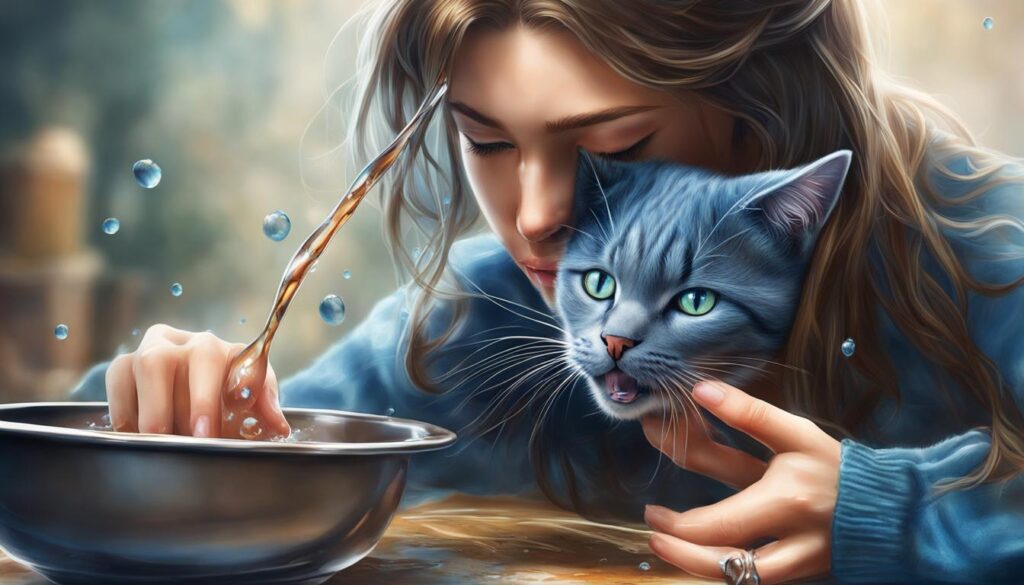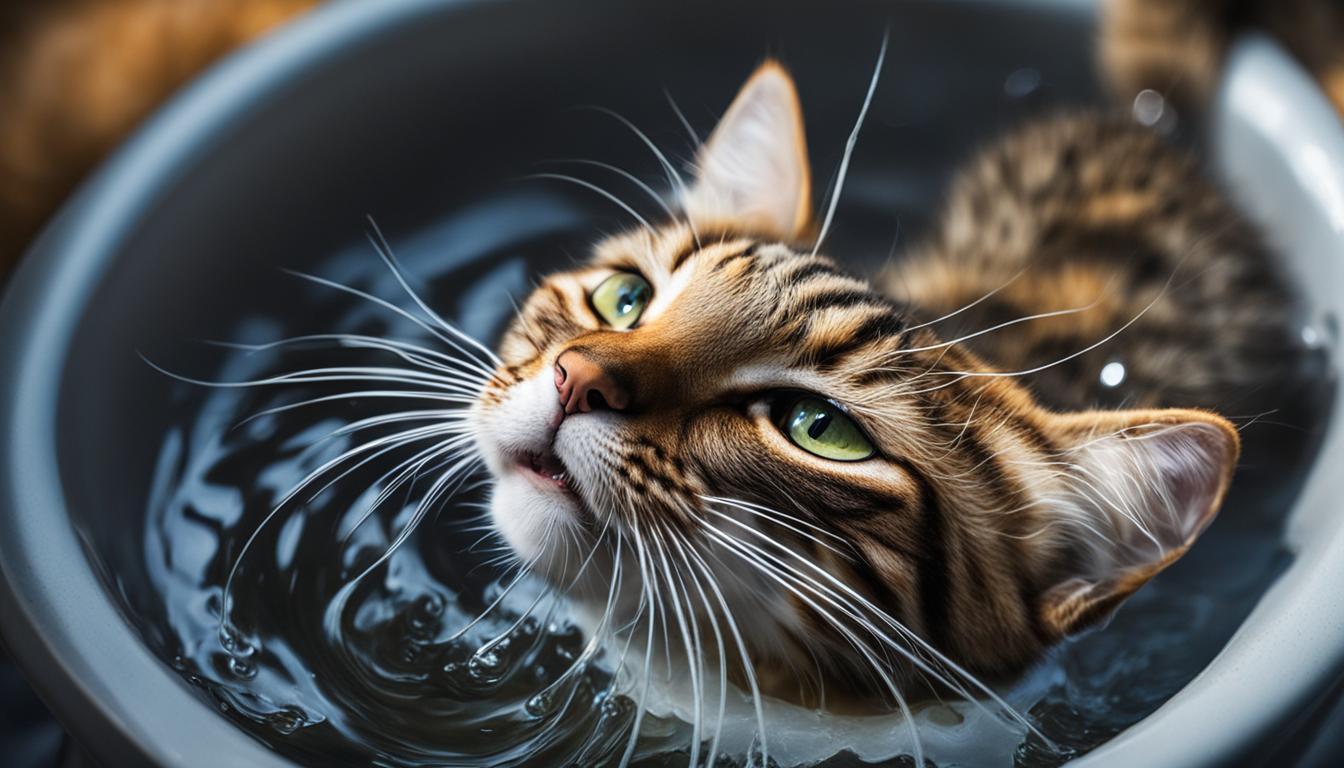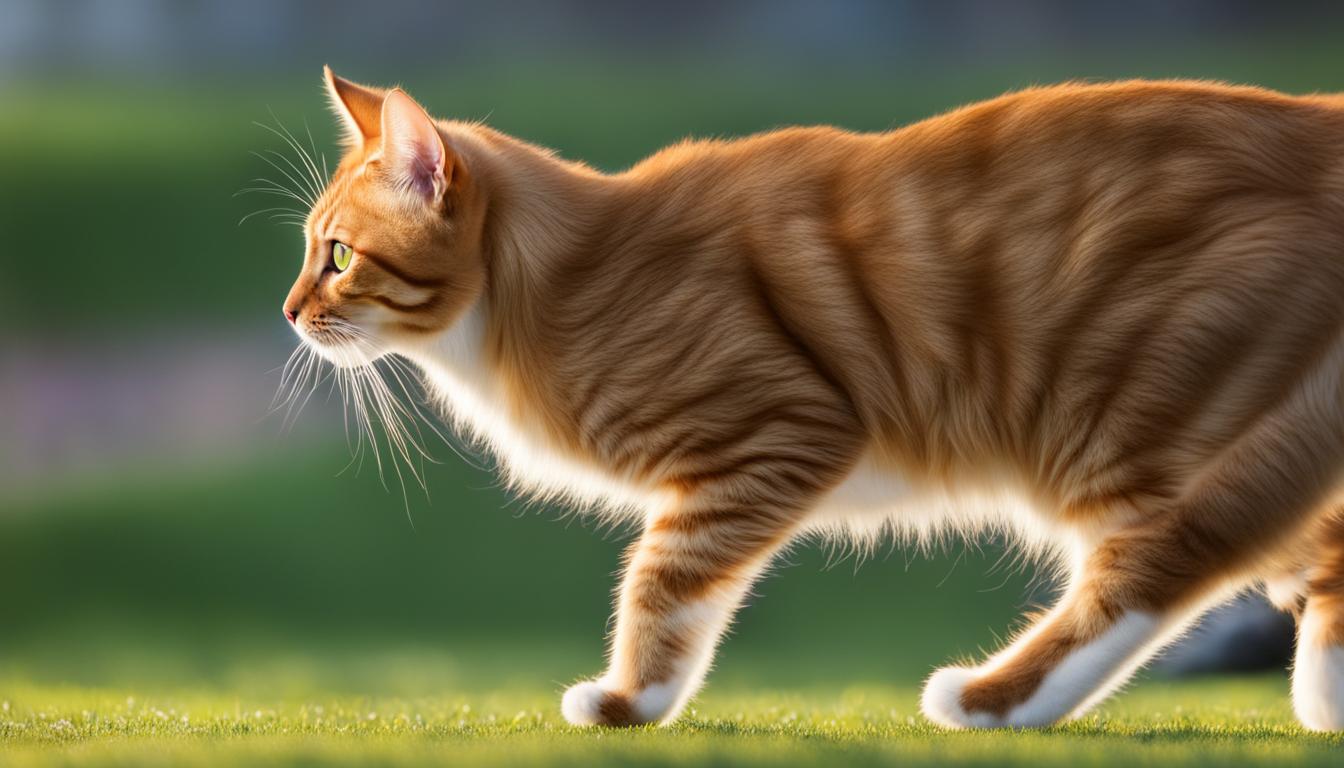How do cats drink? Ah, the curious nature of feline lapping! Have you ever wondered about the physics behind a cat’s elegant drinking technique? Join me on a fascinating exploration of how our furry friends quench their thirst with unrivaled grace and skill.
Researchers have unraveled the secrets of cats’ lapping, from domestic felines to majestic big cats like tigers. It turns out that when a cat drinks, their tongue creates a delicate balance between gravity and inertia. As the top surface of their tongue lightly touches the liquid, a column of liquid forms, defying gravity. This ingenious mechanism allows cats to capture the liquid, while keeping their charming chin dry.
But how exactly do cats use their tongues to drink? Unlike dogs who scoop up water, cats extend their tongues straight down, subtly touching the surface. This unique technique forms a liquid column between their tongue and the liquid, allowing them to sip with finesse. And let’s not forget the role of those glorious whiskers, safeguarding their face from becoming a soggy mess.
Key Takeaways:
- Cats’ lapping technique relies on a perfect balance between gravity and inertia.
- They extend their tongues and lightly touch the liquid to create a liquid column.
- Whiskers protect their face from getting wet.
- The speed and frequency of lapping depend on the size and speed of their tongues.
- The elegance of cat drinking is shared by big cats like tigers and lions.
Join me in the upcoming sections as we delve deeper into the science behind a cat’s lapping technique, explore its evolution, and uncover fascinating insights into feline biology.
How Cats Use Their Tongue to Drink
Cats have a fascinating and unique way of drinking that sets them apart from other animals. While dogs and many other animals scoop up water with their tongues, cats have a more refined technique. When a cat approaches a liquid surface, it extends its tongue straight down with the top surface lightly touching the liquid. This smooth tip of the tongue creates a liquid column between the moving tongue and the surface, allowing the cat to drink without getting its chin wet.
Unlike dogs, who use their tongues as ladles to scoop water into their mouths, cats rely on the delicate balance between gravity and inertia to drink. The elegant and efficient lapping technique is a result of intricate physics. By closing their mouths and capturing the liquid column, cats are able to ingest the liquid while keeping their chins dry. This technique showcases the grace and dexterity of cats when they drink.
Another interesting aspect of a cat’s drinking mechanism is the role of their whiskers. Whiskers are not just cute adornments on a cat’s face; they serve a practical purpose. Whiskers are highly sensitive and help cats navigate their surroundings. When it comes to drinking, whiskers play a crucial role in protecting a cat’s face from getting wet. The whiskers detect changes in the liquid’s surface and act as a warning system, ensuring that cats can lap up the liquid without any unwanted mess.
Comparing Cat Drinking to Other Animals
When it comes to drinking, cats’ lapping technique stands out among other animals. Dogs, for example, use their tongues to scoop up water, resulting in a messier and less efficient process. Cats’ precise control over the liquid column allows them to drink with elegance and minimal spillage. This unique behavior showcases the remarkable adaptations and abilities of our feline friends.
| Animal | Drinking Technique |
|---|---|
| Cat | Extends tongue down to create a liquid column and laps it up |
| Dog | Uses tongue as a ladle to scoop up water |
| Elephant | Sucks up water using its trunk |
| Hummingbird | Extends its long tongue into flowers to sip nectar |
Cat drinking is truly a marvel of nature. The combination of their precise lapping technique and the role of their whiskers ensures a graceful, efficient, and mess-free process. Understanding how cats use their tongues to drink not only deepens our appreciation for these curious creatures but also sheds light on the fascinating world of fluid mechanics.

| Factors Affecting a Cat’s Drinking Technique | Impact |
|---|---|
| Tongue Size and Speed | Determines lapping speed and frequency |
| Viscosity of the Liquid | Influences lapping pace |
| Mouth and Tongue Shape | Contributes to capturing liquid efficiently |
| Taste Buds on the Tongue | Aid in evaluating liquid quality |
Evolution of Cat Drinking and Comparison to Big Cats
As we delve into the fascinating world of cat drinking, it becomes evident that their unique lapping technique is not limited to domestic cats. Big cats, such as tigers and lions, also employ a similar method when quenching their thirst. This observation raises intriguing questions about the evolution of cat drinking and the adaptations that have taken place to optimize this essential behavior.
When comparing the drinking habits of domestic cats to their larger counterparts, one notable difference is the pace at which they lap. While the average domestic cat completes about four laps per second, big cats, due to their larger tongues, adopt a slower approach. This variation in lapping speed demonstrates the intricate relationship between tongue size and drinking efficiency, showcasing the remarkable adaptability of feline drinking techniques.
| Cat | Lapping Speed (laps per second) | Liquid Ingestion per Lap (milliliters) |
|---|---|---|
| Domestic Cat | 4 | 0.1 |
| Tiger | 3 | 0.2 |
| Lion | 2 | 0.3 |
Table: A comparison of lapping speeds and liquid ingestion per lap in different cats.
This disparity in lapping speeds among different cat species offers insights into the adaptive nature of their drinking behavior. The ability to adjust lapping techniques based on tongue size allows cats to effectively capture and consume liquids, regardless of their size. This evolutionary mechanism showcases the dynamic nature of feline biology and the remarkable efficiency with which cats have honed their drinking skills over time.
Conclusion
As I conclude my exploration of the fascinating world of cat drinking, I am in awe of the elegance and efficiency of their lapping technique. These graceful creatures have evolved a remarkable balance between gravity and inertia, allowing them to lap up liquid with ease.
By understanding the physics behind a cat’s lapping, we can gain valuable insights into fluid mechanics and potentially apply this knowledge to improve the design of soft robotics that interact with liquid surfaces. Imagine the possibilities of robots that can delicately manipulate liquids, inspired by the graceful lapping of a cat!
Let’s not forget about the important role of whiskers in a cat’s drinking technique. These sensitive sensory organs help keep their faces dry and protect their delicate senses while they lap. Whiskers truly are multitasking marvels!
So, if you’re looking to improve your cat’s drinking experience, consider the importance of bowl design and make sure it allows for easy access to the liquid. And of course, keep those whiskers intact, as they are essential for your feline friend’s drinking comfort. Cheers to the remarkable world of cat drinking!
FAQ
How do cats drink?
Cats have a unique lapping technique where they extend their tongues straight down towards the liquid, lightly touching the surface. This creates a column of liquid between their tongue and the surface, which they capture by closing their mouths.
How does cat drinking differ from other animals?
Unlike animals that scoop up liquid with their tongues, cats use a delicate balance between gravity and inertia to lap up the liquid. The top surface of their tongue lightly touches the liquid, allowing them to capture the liquid without getting their chin wet.
What role do whiskers play in cat drinking?
Whiskers help protect a cat’s face from getting wet while they lap. They play an important role in guiding the cat’s tongue and ensuring they can drink without getting their sensitive senses wet.
How does the size of a cat affect its lapping technique?
The size of a cat’s tongue determines the speed and frequency of their lapping. Larger cats, such as tigers and lions, lap at a slower pace due to their larger tongues. Age can also affect a cat’s drinking technique, with older cats often lapping at a slower pace.
What can the study of cat drinking teach us?
By studying the physics behind a cat’s lapping technique, we can gain insights into fluid mechanics and potentially apply this knowledge to improve the design of soft robotics that interact with liquid surfaces.
Do big cats have a similar lapping technique?
Yes, big cats like tigers and lions share a similar lapping technique with domestic cats. However, they adjust their lapping technique to account for their larger tongues and size.
How has cat drinking evolved?
Cat drinking has likely evolved over time to take advantage of the physics of lapping. The elegant and efficient way cats drink showcases their adaptation and evolution.





